Brealey, Myers. Principles of Corporate Finance. 7th edition
Подождите немного. Документ загружается.


Brealey−Meyers:
Principles of Corporate
Finance, Seventh Edition
V. Dividend Policy and
Capital Structure
18. How Much Should A
Firm Borrow
© The McGraw−Hill
Companies, 2003
The pecking-order theory starts with asymmetric information—a fancy term indicat-
ing that managers know more about their companies’ prospects, risks, and values
than do outside investors.
Managers obviously know more than investors. We can prove that by observing
stock price changes caused by announcements by managers. When a company an-
nounces an increased regular dividend, stock price typically rises, because in-
vestors interpret the increase as a sign of management’s confidence in future earn-
ings. In other words, the dividend increase transfers information from managers
to investors. This can happen only if managers know more in the first place.
Asymmetric information affects the choice between internal and external fi-
nancing and between new issues of debt and equity securities. This leads to a peck-
ing order, in which investment is financed first with internal funds, reinvested earn-
ings primarily; then by new issues of debt; and finally with new issues of equity.
New equity issues are a last resort when the company runs out of debt capacity,
that is, when the threat of costs of financial distress brings regular insomnia to ex-
isting creditors and to the financial manager.
We will take a closer look at the pecking order in a moment. First, you must ap-
preciate how asymmetric information can force the financial manager to issue debt
rather than common stock.
Debt and Equity Issues with Asymmetric Information
To the outside world Smith & Company and Jones, Inc., our two example compa-
nies, are identical. Each runs a successful business with good growth opportuni-
ties. The two businesses are risky, however, and investors have learned from expe-
rience that current expectations are frequently bettered or disappointed. Current
expectations price each company’s stock at $100 per share, but the true values
could be higher or lower:
CHAPTER 18
How Much Should a Firm Borrow? 511
18.4 THE PECKING ORDER OF FINANCING CHOICES
Smith & Co. Jones, Inc.
True value could be higher, say $120 $120
Best current estimate 100 100
True value could be lower, say 80 80
Now suppose that both companies need to raise new money from investors to
fund capital investment. They can do this either by issuing bonds or by issuing
new shares of common stock. How would the choice be made? One financial man-
ager—we will not tell you which one—might reason as follows:
Sell stock for $100 per share? Ridiculous! It’s worth at least $120. A stock issue now
would hand a free gift to new investors. I just wish those stupid, skeptical share-
holders would appreciate the true value of this company. Our new factories will
make us the world’s lowest-cost producer. We’ve painted a rosy picture for the
press and security analysts, but it just doesn’t seem to be working. Oh well, the de-
cision is obvious: we’ll issue debt, not underpriced equity. Adebt issue will save un-
derwriting fees too.

Brealey−Meyers:
Principles of Corporate
Finance, Seventh Edition
V. Dividend Policy and
Capital Structure
18. How Much Should A
Firm Borrow
© The McGraw−Hill
Companies, 2003
The other financial manager is in a different mood:
Beefalo burgers were a hit for a while, but it looks like the fad is fading. The fast-
food division’s gotta find some good new products or it’s all downhill from here.
Export markets are OK for now, but how are we going to compete with those new
Siberian ranches? Fortunately the stock price has held up pretty well—we’ve had
some good short-run news for the press and security analysts. Now’s the time to is-
sue stock. We have major investments underway, and why add increased debt serv-
ice to my other worries?
Of course, outside investors can’t read the financial managers’ minds. If they
could, one stock might trade at $120 and the other at $80.
Why doesn’t the optimistic financial manager simply educate investors? Then
the company could sell stock on fair terms, and there would be no reason to favor
debt over equity or vice versa.
This is not so easy. (Note that both companies are issuing upbeat press releases.)
Investors can’t be told what to think; they have to be convinced. That takes a de-
tailed layout of the company’s plans and prospects, including the inside scoop on
new technology, product design, marketing plans, and so on. Getting this across is
expensive for the company and also valuable to its competitors. Why go to the
trouble? Investors will learn soon enough, as revenues and earnings evolve. In the
meantime the optimistic financial manager can finance growth by issuing debt.
Now suppose there are two press releases:
Jones, Inc., will issue $120 million of five-year senior notes.
Smith & Co. announced plans today to issue 1.2 million new shares of common
stock. The company expects to raise $120 million.
As a rational investor, you immediately learn two things. First, Jones’s financial
manager is optimistic and Smith’s is pessimistic. Second, Smith’s financial man-
ager is also stupid to think that investors would pay $100 per share. The attempt to
sell stock shows that it must be worth less. Smith might sell stock at $80 per share,
but certainly not at $100.
36
Smart financial managers think this through ahead of time. The end result? Both
Smith and Jones end up issuing debt. Jones, Inc., issues debt because its financial
manager is optimistic and doesn’t want to issue undervalued equity. A smart, but
pessimistic, financial manager at Smith issues debt because an attempt to issue eq-
uity would force the stock price down and eliminate any advantage from doing so.
(Issuing equity also reveals the manager’s pessimism immediately. Most managers
prefer to wait. A debt issue lets bad news come out later through other channels.)
The story of Smith and Jones illustrates how asymmetric information favors debt
issues over equity issues. If managers are better informed than investors and both
groups are rational, then any company that can borrow will do so rather than issu-
ing fresh equity. In other words, debt issues will be higher in the pecking order.
Taken literally this reasoning seems to rule out any issue of equity. That’s not
right, because asymmetric information is not always important and there are other
forces at work. For example, if Smith had already borrowed heavily, and would
risk financial distress by borrowing more, then it would have a good reason to is-
sue common stock. In this case announcement of a stock issue would not be en-
512 PART V
Dividend Policy and Capital Structure
36
A Smith stock issue might not succeed even at $80. Persistence in trying to sell at $80 could convince
investors that the stock is worth even less!
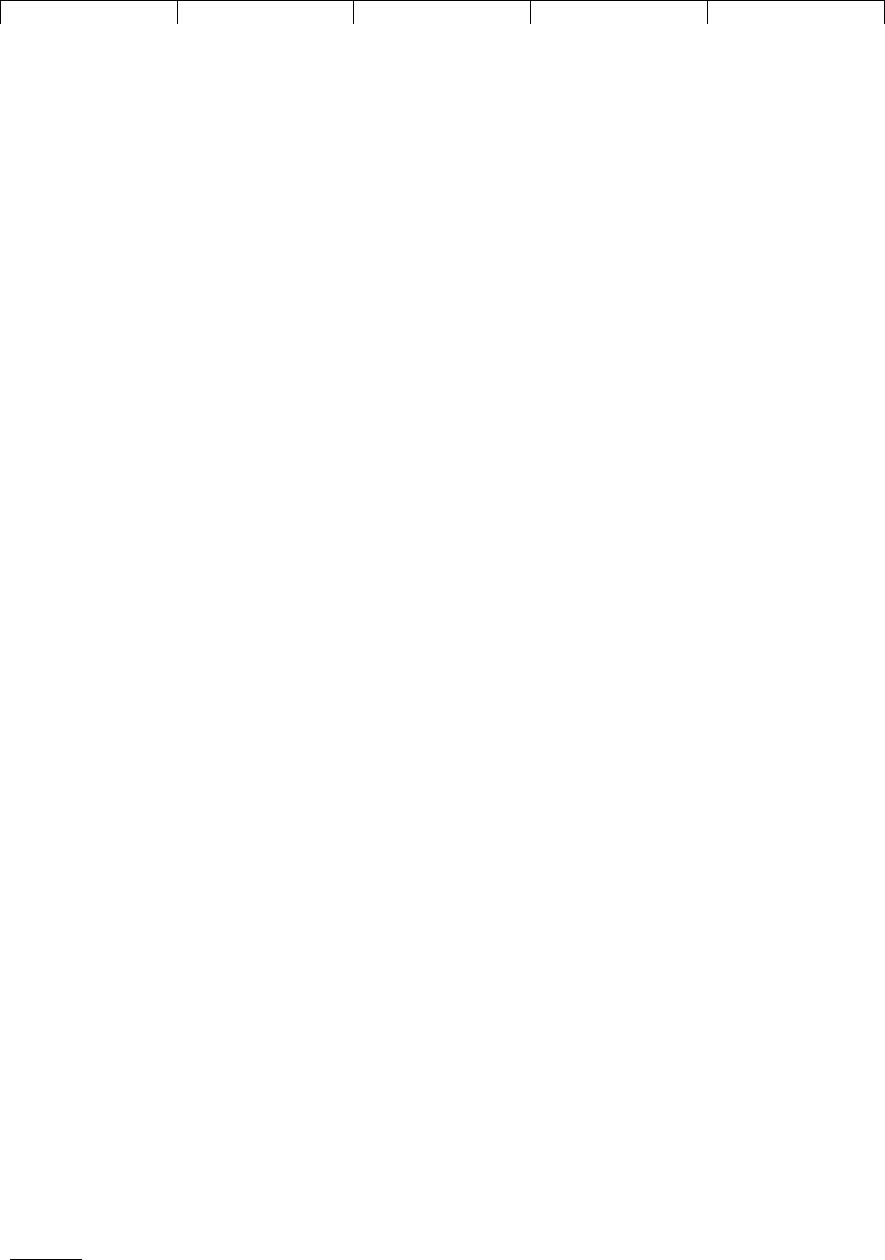
Brealey−Meyers:
Principles of Corporate
Finance, Seventh Edition
V. Dividend Policy and
Capital Structure
18. How Much Should A
Firm Borrow
© The McGraw−Hill
Companies, 2003
tirely bad news. The announcement would still depress the stock price—it would
highlight managers’ concerns about financial distress—but the fall in price would
not necessarily make the issue unwise or infeasible.
High-tech, high-growth companies can also be credible issuers of common
stock. Such companies’ assets are mostly intangible, and bankruptcy or financial
distress would be especially costly. This calls for conservative financing. The only
way to grow rapidly and keep a conservative debt ratio is to issue equity. If in-
vestors see equity issued for these reasons, problems of the sort encountered by
Jones’s financial manager become much less serious.
With such exceptions noted, asymmetric information can explain the domi-
nance of debt financing over new equity issues in practice. Debt issues are fre-
quent; equity issues, rare. The bulk of external financing comes from debt, even in
the United States, where equity markets are highly information-efficient. Equity is-
sues are even more difficult in countries with less well developed stock markets.
None of this says that firms ought to strive for high debt ratios—just that it’s bet-
ter to raise equity by plowing back earnings than issuing stock. In fact, a firm with
ample internally generated funds doesn’t have to sell any kind of security and thus
avoids issue costs and information problems completely.
37
Implications of the Pecking Order
The pecking-order theory of corporate financing goes like this.
38
1. Firms prefer internal finance.
2. They adapt their target dividend payout ratios to their investment
opportunities, while trying to avoid sudden changes in dividends.
3. Sticky dividend policies, plus unpredictable fluctuations in profitability and
investment opportunities, mean that internally generated cash flow is
sometimes more than capital expenditures and other times less. If it is more,
the firm pays off debt or invests in marketable securities. If it is less, the
firm first draws down its cash balance or sells its marketable securities.
4. If external finance is required, firms issue the safest security first. That is,
they start with debt, then possibly hybrid securities such as convertible
bonds, then perhaps equity as a last resort.
In this theory, there is no well-defined target debt–equity mix, because there are
two kinds of equity, internal and external, one at the top of the pecking order and
one at the bottom. Each firm’s observed debt ratio reflects its cumulative require-
ments for external finance.
The pecking order explains why the most profitable firms generally borrow
less—not because they have low target debt ratios but because they don’t need out-
side money. Less profitable firms issue debt because they do not have internal
funds sufficient for their capital investment programs and because debt financing
is first on the pecking order of external financing.
CHAPTER 18
How Much Should a Firm Borrow? 513
37
Even debt issues can create information problems if the odds of default are significant. A pessimistic
manager may try to issue debt quickly, before bad news gets out. An optimistic manager will delay
pending good news, perhaps arranging a short-term bank loan in the meantime. Rational investors will
take this behavior into account in pricing the risky debt issue.
38
The description is paraphrased from S. C. Myers, “The Capital Structure Puzzle,” Journal of Finance 39
(July 1984), pp. 581–582. For the most part, this section follows Myers’s arguments.

Brealey−Meyers:
Principles of Corporate
Finance, Seventh Edition
V. Dividend Policy and
Capital Structure
18. How Much Should A
Firm Borrow
© The McGraw−Hill
Companies, 2003
In the pecking-order theory, the attraction of interest tax shields is assumed to
be a second-order effect. Debt ratios change when there is an imbalance of internal
cash flow, net of dividends, and real investment opportunities. Highly profitable
firms with limited investment opportunities work down to low debt ratios. Firms
whose investment opportunities outrun internally generated funds are driven to
borrow more and more.
This theory explains the inverse intraindustry relationship between profitabil-
ity and financial leverage. Suppose firms generally invest to keep up with the
growth of their industries. Then rates of investment will be similar within an in-
dustry. Given sticky dividend payouts, the least profitable firms will have less in-
ternal funds and will end up borrowing more.
The pecking order seems to predict changes in many mature firms’ debt ratios
to a T. These companies’ debt ratios increase when the firms have financial deficits
and decline when they have surpluses.
39
If asymmetric information makes major
equity issues or retirements rare, this behavior is nearly inevitable.
The pecking order is less successful in explaining interindustry differences in
debt ratios. For example, debt ratios tend to be low in high-tech, high-growth in-
dustries, even when the need for external capital is great. There are also mature,
stable industries—electric utilities, for example—in which ample cash flow is not
used to pay down debt. High dividend payout ratios give the cash flow back to in-
vestors instead.
Financial Slack
Other things equal, it’s better to be at the top of the pecking order than at the bot-
tom. Firms that have worked down the pecking order and need external equity
may end up living with excessive debt or passing by good investments because
shares can’t be sold at what managers consider a fair price.
In other words, financial slack is valuable. Having financial slack means having
cash, marketable securities, readily saleable real assets, and ready access to the
debt markets or to bank financing. Ready access basically requires conservative fi-
nancing so that potential lenders see the company’s debt as a safe investment.
In the long run, a company’s value rests more on its capital investment and op-
erating decisions than on financing. Therefore, you want to make sure your firm
has sufficient financial slack so that financing is quickly available for good invest-
ments. Financial slack is most valuable to firms with plenty of positive-NPV
growth opportunities. That is another reason why growth companies usually as-
pire to conservative capital structures.
Free Cash Flow and the Dark Side of Financial Slack
40
There is also a dark side to financial slack. Too much of it may encourage managers
to take it easy, expand their perks, or empire-build with cash that should be paid
back to stockholders. In other words, slack can make agency problems worse.
Michael Jensen has stressed the tendency of managers with ample free cash flow
(or unnecessary financial slack) to plow too much cash into mature businesses or
514 PART V
Dividend Policy and Capital Structure
39
See L. Shyam Sunder and S. C. Myers, “Testing Static Tradeoff Against Pecking Order Models of Cap-
ital Structure,” Journal of Financial Economics 51 (February 1999), pp. 219–244.
40
Some of the following is drawn from S. C. Myers, “Still Searching for Optimal Capital Structure,” Jour-
nal of Applied Corporate Finance 6 (Spring 1993), pp. 4–14.
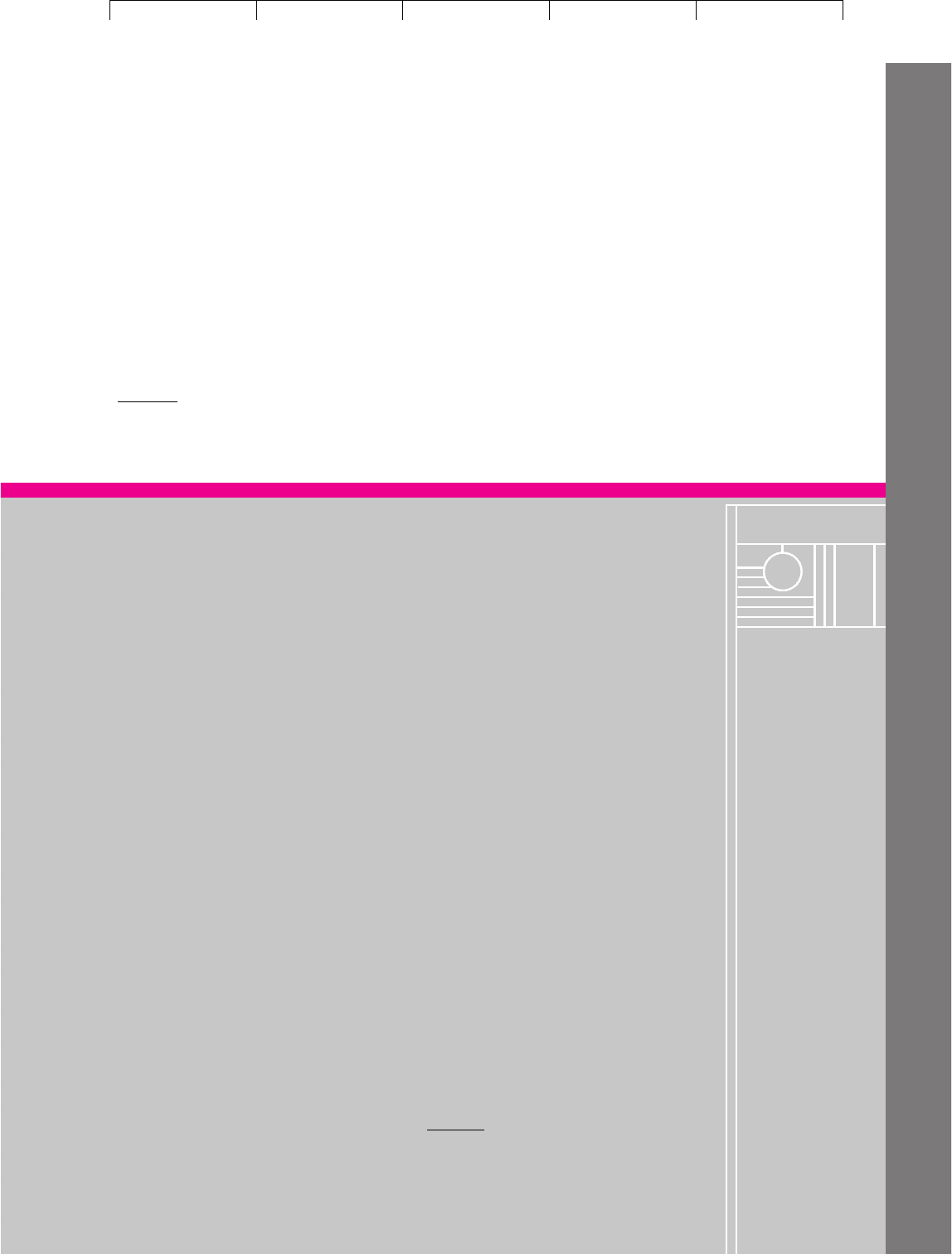
Brealey−Meyers:
Principles of Corporate
Finance, Seventh Edition
V. Dividend Policy and
Capital Structure
18. How Much Should A
Firm Borrow
© The McGraw−Hill
Companies, 2003
CHAPTER 18 How Much Should a Firm Borrow? 515
ill-advised acquisitions. “The problem,” Jensen says, “is how to motivate man-
agers to disgorge the cash rather than investing it below the cost of capital or wast-
ing it in organizational inefficiencies.”
41
If that’s the problem, then maybe debt is an answer. Scheduled interest and prin-
cipal payments are contractual obligations of the firm. Debt forces the firm to pay
out cash. Perhaps the best debt level would leave just enough cash in the bank, af-
ter debt service, to finance all positive-NPV projects, with not a penny left over.
We do not recommend this degree of fine-tuning, but the idea is valid and im-
portant. Debt can discipline managers who are tempted to invest too much. It can
also provide the pressure to force improvements in operating efficiency. We pick
up this theme again in Chapters 33 and 34.
41
M. C. Jensen, “Agency Costs of Free Cash Flow, Corporate Finance and Takeovers,” American Economic
Review 26 (May 1986), p. 323.
SUMMARY
Visit us at www.mhhe.com/bm7e
Our task in this chapter was to show why capital structure matters. We did not
throw away MM’s proposition I, that capital structure is irrelevant; we added to
it. However, we did not arrive at any simple, satisfactory theory of optimal cap-
ital structure.
The traditional trade-off theory emphasizes taxes and financial distress. The
value of the firm is broken down as
According to this theory, the firm should increase debt until the value from PV(tax
shield) is just offset, at the margin, by increases in PV(costs of financial distress).
The costs of financial distress can be broken down as follows:
1. Bankruptcy costs
a. Direct costs such as court fees.
b. Indirect costs reflecting the difficulty of managing a company undergoing
liquidation or reorganization.
2. Costs of financial distress short of bankruptcy
a. Conflicts of interest between bondholders and stockholders of firms in fi-
nancial distress may lead to poor operating and investment decisions. Stock-
holders acting in their narrow self-interest can gain at the expense of credi-
tors by playing “games” that reduce the overall value of the firm.
b. The fine print in debt contracts is designed to prevent these games. But
fine print increases the costs of writing, monitoring, and enforcing the
debt contract.
The value of the tax shield is more controversial. It would be easy to compute if
we had only corporate taxes to worry about. In that case the net tax saving from bor-
rowing would be just the marginal corporate tax rate times , the interest pay-
ment. This tax shield is usually valued by discounting at the borrowing rate . In the
special case of fixed, permanent debt
PV1tax shield2⫽
T
c
1r
D
D2
r
D
⫽ T
c
D
r
D
r
D
DT
c
Value if all-equity-financed ⫹ PV1tax shield2⫺ PV1costs of financial distress2
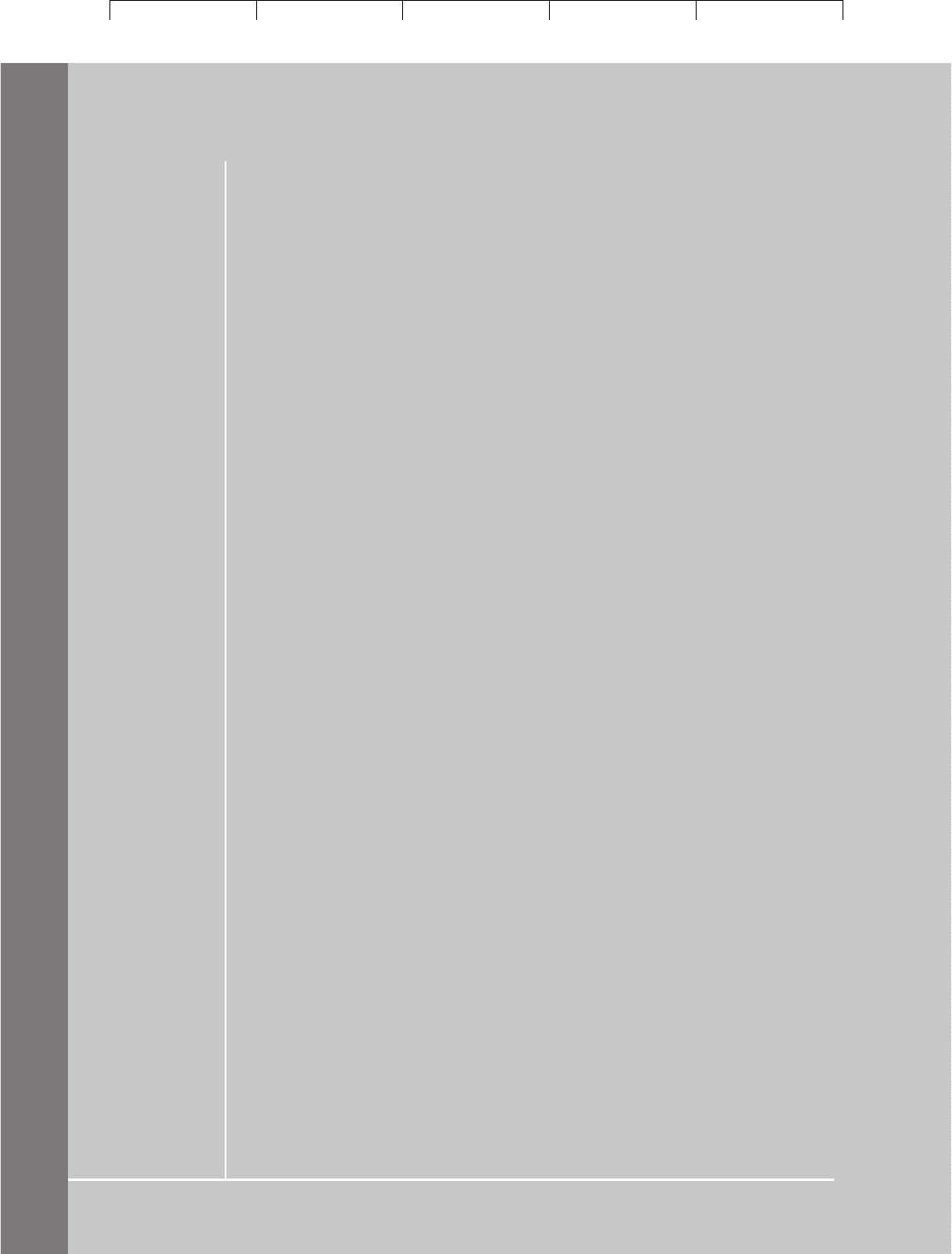
Brealey−Meyers:
Principles of Corporate
Finance, Seventh Edition
V. Dividend Policy and
Capital Structure
18. How Much Should A
Firm Borrow
© The McGraw−Hill
Companies, 2003
516 PART V Dividend Policy and Capital Structure
However, corporate taxes are only part of the story. If investors are subject to
higher taxes on interest income than on equity income (dividends and capital
gains), they will be reluctant to hold corporate debt and will do so only if they are
compensated by a sufficiently attractive rate of interest. Thus, ultimately firms end
up paying for any additional personal taxes that are levied on debtholders. The
personal tax disadvantage of debt is smaller today than it once was, but it proba-
bly still offsets to some degree the corporate tax advantage.
We suggest that borrowing may make sense for some firms but not for others. If
a firm can be fairly sure of earning a profit, there is likely to be a net tax saving from
borrowing. However, for firms that are unlikely to earn sufficient profits to benefit
from the corporate tax shield, there is little, if any, net tax advantage to borrowing.
For these firms the net tax saving could even be negative.
The trade-off theory balances the tax advantages of borrowing against the costs
of financial distress. Corporations are supposed to pick a target capital structure
that maximizes firm value. Firms with safe, tangible assets and plenty of taxable
income to shield ought to have high targets. Unprofitable companies with risky, in-
tangible assets ought to rely primarily on equity financing.
This theory of capital structure successfully explains many industry differences
in capital structure, but it does not explain why the most profitable firms within an
industry generally have the most conservative capital structures. Under the trade-
off theory, high profitability should mean high debt capacity and a strong corpo-
rate tax incentive to use that capacity.
There is a competing, pecking-order theory, which states that firms use internal
financing when available and choose debt over equity when external financing is
required. This explains why the less profitable firms in an industry borrow more—
not because they have higher target debt ratios but because they need more exter-
nal financing and because debt is next on the pecking order when internal funds
are exhausted.
The pecking order is a consequence of asymmetric information. Managers know
more about their firms than outside investors do, and they are reluctant to issue
stock when they believe the price is too low. They try to time issues when shares
are fairly priced or overpriced. Investors understand this, and interpret a decision
to issue shares as bad news. That explains why stock price usually falls when a
stock issue is announced.
Debt is better than equity when these information problems are important. Op-
timistic managers will prefer debt to undervalued equity, and pessimistic man-
agers will be pressed to follow suit. The pecking-order theory says that equity will
be issued only when debt capacity is running out and financial distress threatens.
The pecking-order theory is clearly not 100 percent right. There are many ex-
amples of equity issued by companies that could easily have borrowed. But the
theory does explain why most external financing comes from debt, and it explains
why changes in debt ratios tend to follow requirements for external financing.
The pecking-order theory stresses the value of financial slack. Without sufficient
slack, the firm may be caught at the bottom of the pecking order and be forced to
choose between issuing undervalued shares, borrowing and risking financial dis-
tress, or passing up positive-NPV investment opportunities.
There is, however, a dark side to financial slack. Surplus cash or credit tempts
managers to overinvest or to indulge an easy and glamorous corporate lifestyle.
When temptation wins, or threatens to win, a high debt ratio can help: It forces the
company to disgorge cash and prods managers and organizations to try harder to
be more efficient.
Visit us at www.mhhe.com/bm7e
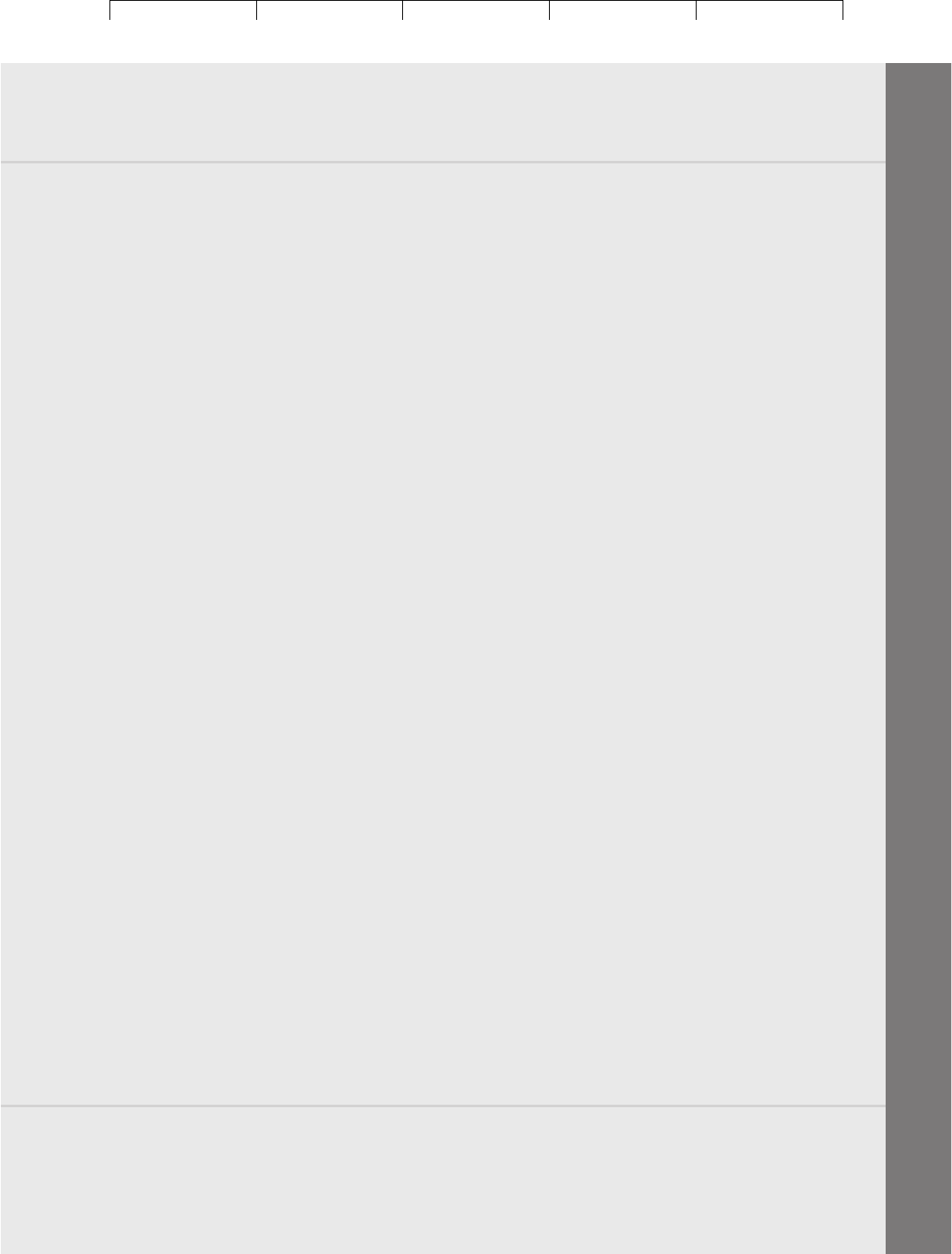
Brealey−Meyers:
Principles of Corporate
Finance, Seventh Edition
V. Dividend Policy and
Capital Structure
18. How Much Should A
Firm Borrow
© The McGraw−Hill
Companies, 2003
CHAPTER 18 How Much Should a Firm Borrow? 517
FURTHER
READING
Modigliani and Miller’s analysis of the present value of interest tax shields at the corporate level is in:
F. Modigliani and M. H. Miller: “Corporate Income Taxes and the Cost of Capital: A Cor-
rection,” American Economic Review, 53:433–443 (June 1963).
F. Modigliani and M. H. Miller: “Some Estimates of the Cost of Capital to the Electric Util-
ity Industry, 1954–57,” American Economic Review, 56:333–391 (June 1966).
Miller extends the MM model to personal as well as corporate taxes. DeAngelo and Masulis argue
that firms with plenty of noninterest tax shields, for example, shields from depreciation, should bor-
row less. Graham’s estimates of the tax benefits of debt recognize the possibility that firms will not
earn taxable profits in the future:
M. H. Miller: “Debt and Taxes,” Journal of Finance, 32:261–276 (May 1977).
H. DeAngelo and R. Masulis: “Optimal Capital Structure under Corporate Taxation,” Jour-
nal of Financial Economics, 8:5–29 (March 1980).
J. R. Graham: “How Big Are the Tax Benefits of Debt?” Journal of Finance, 55:1901–1941 (Oc-
tober 2000).
The following articles analyze the conflicts of interest between bondholders and stockholders and their
implications for financing policy (do not read the last article until you have read Chapter 20):
M. C. Jensen and W. H. Meckling: “Theory of the Firm: Managerial Behavior, Agency Costs
and Ownership Structure,” Journal of Financial Economics, 3:305–360 (October 1976).
S. C. Myers: “Determinants of Corporate Borrowing,” Journal of Financial Economics,
5:146–175 (1977).
D. Galai and R. W. Masulis: “The Option Pricing Model and the Risk Factor of Stock,” Jour-
nal of Financial Economics, 3:53–82 (January–March 1976).
Myers describes the pecking-order theory, which is in turn based on work by Myers and Majluf;
Baskin and Shyam-Sunder and Myers survey some of the evidence for that theory:
S. C. Myers: “The Capital Structure Puzzle,” Journal of Finance, 39:575–592 (July 1984).
S. C. Myers and N. S. Majluf: “Corporate Financing and Investment Decisions When Firms Have
Information Investors Do Not Have,” Journal of Financial Economics, 13:187–222 (June 1984).
J. Baskin: “An Empirical Investigation of the Pecking Order Hypothesis,” Financial Manage-
ment, 18:26–35 (Spring 1989).
L. Shyam-Sunder and S. C. Myers: “Testing Static Trade-Off Against Pecking-Order Models
of Capital Structure,” Journal of Financial Economics, 51:219–244 (February 1999).
Some useful reviews of theory and evidence on optimal capital structure are:
M. J. Barclay, C. W. Smith, and R. L. Watts: “The Determinants of Corporate Leverage and
Dividend Policies,” Journal of Applied Corporate Finance, 7:4–19 (Winter 1995).
M. Harris and A. Raviv: “The Theory of Optimal Capital Structure,” Journal of Finance,
48:297–356 (March 1991).
S. C. Myers: “Capital Structure,” Journal of Economic Perspectives, 15:81–102 (Spring 2000).
The Spring 1993 and Winter 1995 issues of the Journal of Applied Corporate Finance contain
several articles on the incentive effects of capital structure.
The January–February 1986 issue of the Journal of Financial Economics (vol. 15, no. 1/2) collects
a series of empirical studies on the stock price impacts of debt and equity issues and capital struc-
ture changes.
QUIZ
1. Compute the present value of interest tax shields generated by these three debt issues.
Consider corporate taxes only. The marginal tax rate is .
a. A $1,000, one-year loan at 8 percent.
T
c
⫽ .35
Visit us at www.mhhe.com/bm7e

Brealey−Meyers:
Principles of Corporate
Finance, Seventh Edition
V. Dividend Policy and
Capital Structure
18. How Much Should A
Firm Borrow
© The McGraw−Hill
Companies, 2003
518 PART V Dividend Policy and Capital Structure
Visit us at www.mhhe.com/bm7e
b. A five-year loan of $1,000 at 8 percent. Assume no principal is repaid until
maturity.
c. A $1,000 perpetuity at 7 percent.
2. Here are book and market value balance sheets of the United Frypan Company (UF):
Book Market
Net working capital $ 20 Debt $ 40 Net working capital $ 20 Debt $ 40
Long-term assets 80 Equity 60 Long-term assets 140 Equity 120
$100 $100 $160 $160
Assume that MM’s theory holds with taxes. There is no growth, and the $40 of debt is
expected to be permanent. Assume a 40 percent corporate tax rate.
a. How much of the firm’s value is accounted for by the debt-generated tax shield?
b. How much better off will UF’s shareholders be if the firm borrows $20 more and
uses it to repurchase stock?
c. Now suppose that subsequently Congress passes a law which eliminates the
deductibility of interest for tax purposes after a grace period of five years. What
will be the new value of the firm, other things equal? (Assume an 8 percent
borrowing rate.)
3. What is the relative tax advantage of corporate debt if the corporate tax rate is ,
the personal tax rate is , but all equity income is received as capital gains and es-
capes tax entirely ? How does the relative tax advantage change if the company
decides to pay out all equity income as cash dividends?
4. This question tests your understanding of financial distress.
a. What are the costs of going bankrupt? Define these costs carefully.
b. “A company can incur costs of financial distress without ever going bankrupt.”
Explain how this can happen.
c. Explain how conflicts of interest between bondholders and stockholders can lead
to costs of financial distress.
5. On February 29, 2003, when PDQ Computers announced bankruptcy, its share price fell
from $3.00 to $.50 per share. There were 10 million shares outstanding. Does that imply
bankruptcy costs of ? Explain.
6. “The firm can’t use interest tax shields unless it has (taxable) income to shield.” What
does this statement imply for the debt policy? Explain briefly.
7. Let us go back to Circular File’s market value balance sheet:
10 ⫻ 13.00 ⫺ .502⫽ $25
million
1T
pE
⫽ 02
T
p
⫽ .31
T
c
⫽ .35
Net working capital $20 $25 Bonds outstanding
Fixed assets 10 5 Common stock
Total assets $30 $30 Total value
Who gains and who loses from the following maneuvers?
a. Circular scrapes up $5 in cash and pays a cash dividend.
b. Circular halts operations, sells its fixed assets, and converts net working capital
into $20 cash. Unfortunately the fixed assets fetch only $6 on the secondhand
market. The $26 cash is invested in Treasury bills.
c. Circular encounters an acceptable investment opportunity, , requiring an
investment of $10. The firm borrows to finance the project. The new debt has the
same security, seniority, etc., as the old.
d. Suppose that the new project has and is financed by an issue of
preferred stock.
e. The lenders agree to extend the maturity of their loan from one year to two in
order to give Circular a chance to recover.
NPV ⫽⫹$2
NPV ⫽ 0
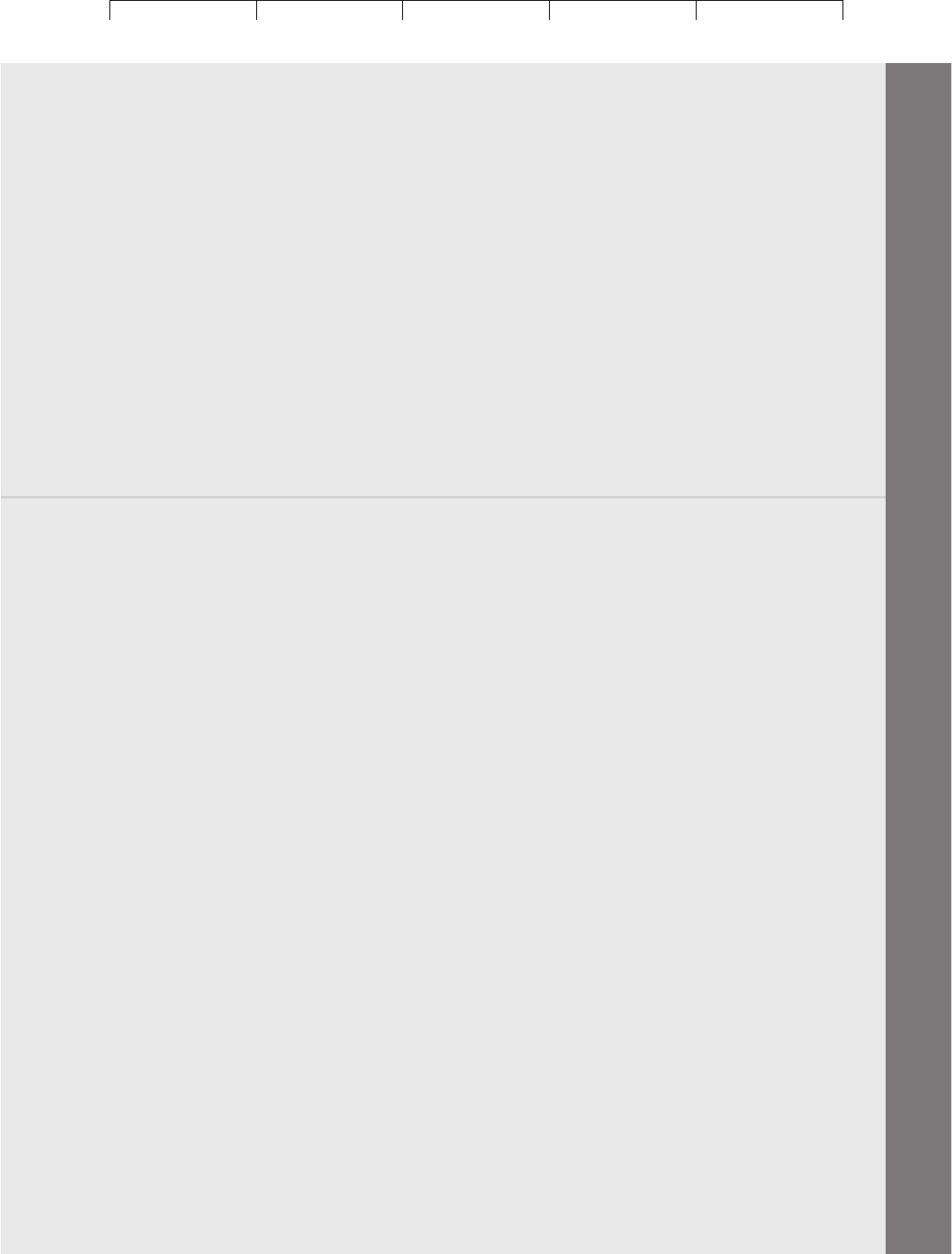
Brealey−Meyers:
Principles of Corporate
Finance, Seventh Edition
V. Dividend Policy and
Capital Structure
18. How Much Should A
Firm Borrow
© The McGraw−Hill
Companies, 2003
CHAPTER 18 How Much Should a Firm Borrow? 519
8. What types of firms would be likely to incur heavy costs in the event of bankruptcy or
financial distress? What types would incur relatively light costs? Give a few examples
of each type.
9. The traditional theory of optimal capital structure states that firms trade off corporate
interest tax shields against the possible costs of financial distress due to borrowing.
What does this theory predict about the relationship between book profitability and tar-
get book debt ratios? Is the theory’s prediction consistent with the facts?
10. What is meant by the pecking-order theory of capital structure? Could this theory ex-
plain the observed relationship between profitability and debt ratios? Explain briefly.
11. Why does asymmetric information push companies to raise external funds by borrow-
ing rather than by issuing common stock?
12. For what kinds of companies is financial slack most valuable? Are there situations in
which financial slack should be reduced by borrowing and paying out the proceeds to
the stockholders? Explain.
PRACTICE
QUESTIONS
1. Suppose that, in an effort to reduce the federal deficit, Congress increases the top per-
sonal tax rate on interest and dividends to 44 percent but retains a 20 percent tax rate
on realized capital gains. The corporate tax rate stays at 35 percent. Compute the total
corporate plus personal taxes paid on debt versus equity income if (a) all capital gains
are realized immediately and (b) capital gains are deferred forever. Assume capital
gains are half of equity income.
2. “The trouble with MM’s argument is that it ignores the fact that individuals can deduct
interest for personal income tax.” Show why this is not an objection. What difference
would it make if individuals were not allowed to deduct interest for personal tax?
3. Look back at the Pfizer example in Section 18.1. Suppose that Pfizer moves to a 40 per-
cent book debt ratio by issuing debt and using the proceeds to repurchase shares.
Consider only corporate taxes. Now reconstruct Table 18.3(b) to reflect the new capi-
tal structure.
4. Calculate the tax shield for an actual U.S. company assuming:
a. Debt is permanent.
b. Personal tax rates on debt and equity income are the same.
How would the stock price change if the company announced tomorrow that it
intended to replace all its debt with equity?
5. Tables 18.3(a) and 18.3(b), although pertaining to a real company, are really just a sim-
plified numerical example. What factors would you expect to determine the value of in-
terest tax shields in practice—not just for Pfizer, but for a range of companies with dif-
ferent profitability, risk, and types of business?
6. “The right of shareholders to default is a valuable privilege.” Explain.
7. In Section 18.3, we briefly referred to three games: Playing for time, cash in and run, and
bait and switch.
For each game, construct a simple numerical example (like the example for the
risk-shifting game) showing how shareholders can gain at the expense of creditors.
Then explain how the temptation to play these games could lead to costs of financial
distress.
8. Summarize the evidence pro and con the trade-off theory of capital structure.
9. Look at some real companies with different types of assets. What operating problems
would each encounter in the event of financial distress? How well would the assets
keep their value?
Visit us at www.mhhe.com/bm7e
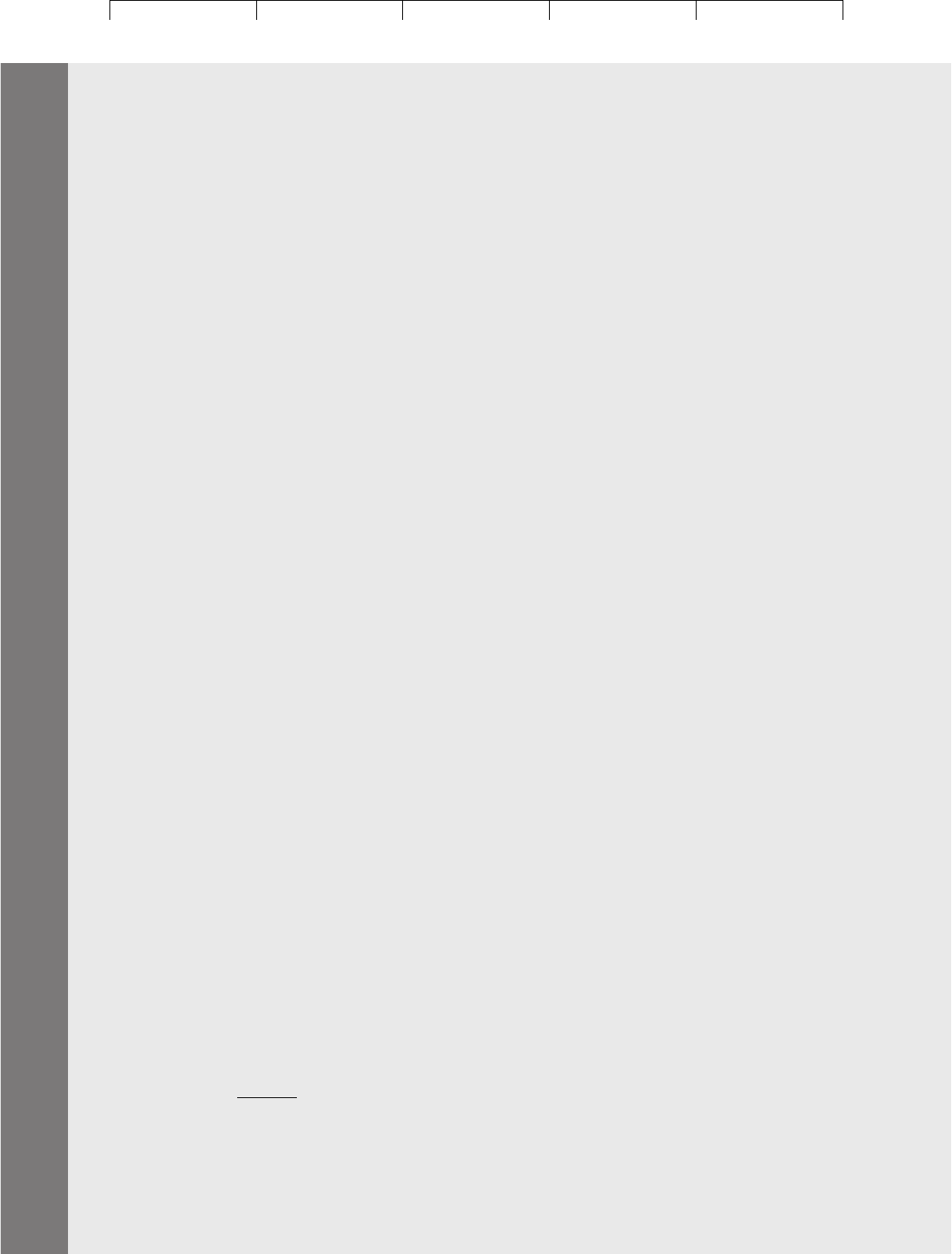
Brealey−Meyers:
Principles of Corporate
Finance, Seventh Edition
V. Dividend Policy and
Capital Structure
18. How Much Should A
Firm Borrow
© The McGraw−Hill
Companies, 2003
520 PART V Dividend Policy and Capital Structure
Visit us at www.mhhe.com/bm7e
10. The Salad Oil Storage (SOS) Company has financed a large part of its facilities with
long-term debt. There is a significant risk of default, but the company is not on the ropes
yet. Explain:
a. Why SOS stockholders could lose by investing in a positive-NPV project financed
by an equity issue.
b. Why SOS stockholders could gain by investing in a negative-NPV project financed
by cash.
c. Why SOS stockholders could gain from paying out a large cash dividend.
How might the firm’s adherence to a target debt ratio mitigate some or all of the
problems noted above?
11. a. Who benefits from the fine print in bond contracts when the firm gets into financial
trouble? Give a one-sentence answer.
b. Who benefits from the fine print when the bonds are issued? Suppose the firm is
offered the choice of issuing (i) a bond with standard restrictions on dividend
payout, additional borrowing, etc., and (ii) a bond with minimal restrictions but a
much higher interest rate? Suppose the interest rates on both (i) and (ii) are fair
from the viewpoint of lenders. Which bond would you expect the firm to issue?
Why?
12. Caldor, the retailing chain, filed for bankruptcy in September 1995. Shortly after the
bankruptcy its stock traded at $5.25 per share, down from about $20 earlier in the year.
How much of this drop should be attributed to bankruptcy costs—all, part, or none?
Explain.
13. “I was amazed to find that the announcement of a stock issue drives down the value of
the issuing firm by 30 percent, on average, of the proceeds of the issue. That issue cost
dwarfs the underwriter’s spread and the administrative costs of the issue. It makes
common stock issues prohibitively expensive.”
a. You are contemplating a $100 million stock issue. On past evidence, you anticipate
that announcement of this issue will drive down stock price by 3 percent and that
the market value of your firm will fall by 30 percent of the amount to be raised. On
the other hand, additional equity funds are necessary to fund an investment
project which you believe has a positive NPV of $40 million. Should you proceed
with the issue?
b. Is the fall in market value on announcement of a stock issue an issue cost in the
same sense as an underwriter’s spread? Respond to the quote that begins this
question.
Use your answer to (a) as a numerical example to explain your response to (b).
14. Ronald Masulis
42
has analyzed the stock price impact of exchange offers of debt for eq-
uity or vice versa. In an exchange offer, the firm offers to trade freshly issued securities
for seasoned securities in the hands of investors. Thus, a firm that wanted to move to a
higher debt ratio could offer to trade new debt for outstanding shares. A firm that
wanted to move to a more conservative capital structure could offer to trade new shares
for outstanding debt securities.
Masulis found that debt for equity exchanges were good news (stock price in-
creased on announcement) and equity for debt exchanges were bad news.
a. Are these results consistent with the trade-off theory of capital structure?
b. Are the results consistent with the evidence that investors regard announcements
of (i) stock issues as bad news, (ii) stock repurchases as good news, and (iii) debt
issues as no news, or at most trifling disappointments?
c. How could Masulis’s results be explained?
42
R. W. Masulis, “The Effects of Capital Structure Change on Security Prices: A Study of Exchange Of-
fers,” Journal of Financial Economics 8 (June 1980), pp. 139–177, and “The Impact of Capital Structure
Change on Firm Value,” Journal of Finance 38 (March 1983), pp. 107–126.
